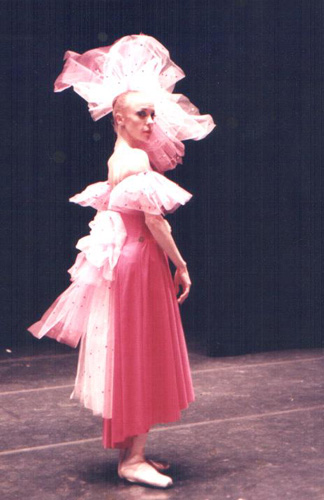La Valse-Ballet Met. Columbus
 |
|---|
La Valse Ballet Met
“ La Valse ” Choreography by Domy Reiter-Soffer expresses the horror of war as Ravel intended. It is as dramatic as the music suggests and yet very deceptive as it swirls through a lifetime of intrigues and eventual end of an era. The ballet is as intense as its music full of powerful and most poignant choreography that leaves you thinking for hours after, of the last waltz of Europe ”.
(Anna Kisselgoff- New York Times).
“Choreographer Domy Reiter-Soffer's La Valse : Ballet Met focused its energies for a fitting tribute to its past. Reiter-Soffer choreographs Ballet for emotional ends. To depict the desperate Gaiety of Paris just before the first world war, he chooses the music of Maurice Ravel, almost palpable attractive to the ears. Reiter-Soffer uses the isolation of Ravel as an Artist living in hedonistic society.
The first part of the ballet, with Art Nouveau costumes and décor, is danced to Ravel's Valses Nobles et Sentimentales, written before the war. Here the Dancers are dressed in colors so vivid they suggest giddiness as artificial as the cheeks of over rouged woman. The dancing is less erotic or Romantic than decadent. Ravel, dapper suaveness cloaking his painful rejection, tries to enter this life, but is locked out, and turns for support to the contemporary group of Artists known as les Six.
In the second part, danced to Ravel's La Valse , The décor and costumes harden to black and silver, and the movement becomes frantic and angular. The dancers move as though propelled by some unseen force; the men's goose-stepping perhaps refers to an unthinking acceptance of violence. Following Ravel's demonic score, all order breaks down, and dancer's bodies litter the stage like parts of broken dolls.
Ballet Met. Made a strong statement with this powerful antiwar ballet. The principals expressed the inner torment with elegance and poignancy. The dancers' intense involvement with the work stretched out across the footlights”.
(Barbara Zuck- Dancing Times).
